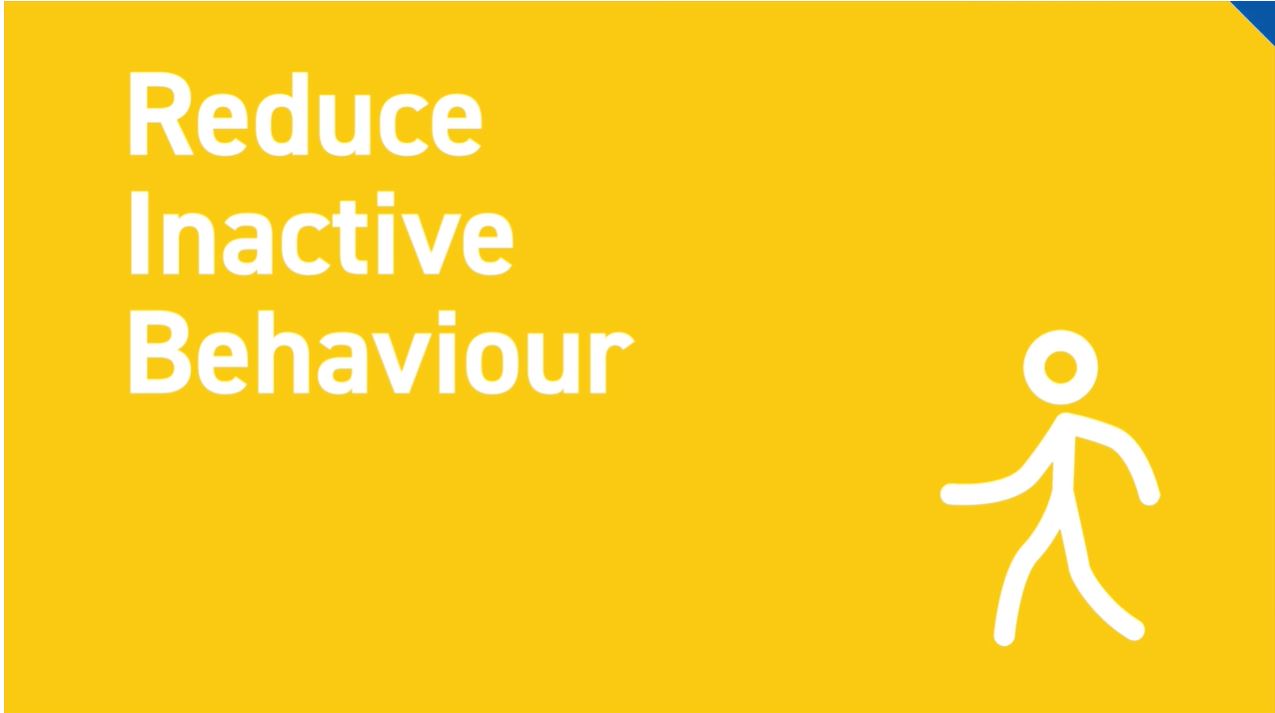Learn How To
Reduce Inactive Behaviour
Reducing Inactive Behaviour
Do you want to increase your activity and fitness? Here’s our top tips on how you can reduce inactive behaviour and reach your health and fitness goal.

What Is Physical Inactivity?
Physical inactivity is anytime that you spend stationary without standing or moving ie the time which is spent sitting down. Sedentary behaviour such as sitting at our desk, in the car or on the sofa for too long can all negatively impact our overall health leading to an increased risk of developing health conditions.
What Are The Risks Of Physical Inactivity?
Sitting for long periods can have a detrimental affect on your health and is linked to:
· Heart disease – A study conducted by Loughborough University and Leicester University found that people who sat a lot had twice the risk of developing heart disease as the people who moved around a lot.
· Type 2 diabetes – Sitting for long periods of time leads to insulin resistance, which in turn can cause type 2 diabetes.
· Poor mental health – Studies have found that physical inactivity is linked with poor mental health.
How To Reduce Physical Inactivity At Home And At Work
To reduce physical activity, it’s important to make a conscious effort to get up from your seat on a regular basis in addition to the 150 minutes of moderate activity stated in the physical activity guidelines.
If you’re an office worker who spends the majority of your working day sat down in front of your computer screen, then here are some handy tips for increasing your activity levels throughout the day:
- Use your lunch break to exercise. Do you end up wasting your lunch break scrolling through social media and online websites? Why not go for a walk before your lunch to work up an appetite or squeeze in a post-lunch walk to burn of a few extra calories.
- Rely less on technology. Instead of sending an email or making a phone call to a colleague who’s located downstairs or across the building why not go and see them in person? This is the perfect excuse to get up and away for desk giving your eyes a rest and your body some exercises.
- Park further from the office. If the weather is pleasant, why not park further from the office? You don’t have to park miles away, it could be as simple as choosing an office parking space that’s a couple of hundred feet away from your usual spot.
- Stand during phone calls. Not only does standing put less pressure on your diaphragm than sitting, it can also help you sound more confident and give you a reason to stand up and stretch your legs!
- Increase the amount of water that you drink. Not only is this a great habit that will help with hydration, it’s also a handy way to reduce inactivity. (P.S. this might also result in a few more trips to the restroom, a mild inconvenience, but great for your step count, right?!).








